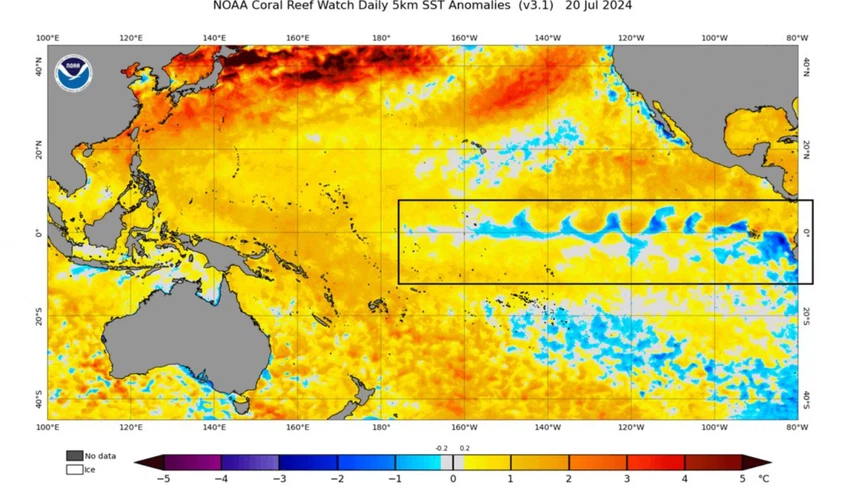Jordan | After the significant rise in temperatures last June, where did the heat waves go? Does this portend a colder than usual winter for the Kingdom?
Arabia Weather - As the end of the month of July approaches, weather indicators still herald the absence of heat waves from the Kingdom and thus the continuation of the weather systems in the same manner as they have been since the beginning of the month, since, given the nature of the weather systems affecting the northern hemisphere, we see that It is difficult for any heat waves to advance towards the Kingdom during the remainder of the current month of July, and therefore it is expected, God willing, that the month of July will end with temperatures slightly above the general average.
Weather forecasters at the Arab Weather Center said that the nature of the weather systems in the current month of July is completely different from last June, with which the Kingdom witnessed two heat waves. The first was in the period 2-8/June/2024 and lasted for 7 days, while it was The second wave occurred in the period June 12-20, 2024, and continued for 9 long days, as the Kingdom witnessed a significant rise in temperatures due to the early advance of the tropical high into the Kingdom, and temperatures in the capital, Amman, recorded 40 degrees Celsius on 5 days of the month. While temperatures approached 50 degrees Celsius in the Jordan Valley, Dead Sea and Aqaba areas.
Read also Jordan | June 2024 is one of the hottest months for the same month in climate records
The nature of the weather systems in the northern hemisphere forced the heat dome to move away from the Kingdom this July
The specialists at the Arab Weather Center said that after analyzing the weather systems prevailing in the current month of July, we find that the Kingdom was not directly and indirectly affected by the heat dome stationed in the Arabian Peninsula, which is considered primarily responsible for strong heat waves around the world, and the reason is due to After God's will, the nature of the weather systems that prevailed in the northern hemisphere, represented by the continuous rush of cold upper basins towards the east of the European continent, worked as a repel of the hot air and prevented it from deepening towards the Kingdom.
Other topics:
An overview of the coming months and what impact will the growing La Nina phenomenon have on the coming winter?
In the beginning, the La Nina phenomenon is represented by a decrease in the water surface temperature in the region located on the equator of the Pacific Ocean, where expectations actually indicate that this region is witnessing a clear cooling of the water surface temperature, as it has decreased from its average by a degree ranging from one to two degrees since May, and we can According to the following model, we clearly see the decrease in the temperature of the water surface in the Pacific Ocean, with which the evaporation process decreases, creating stable and dry climate conditions, in contrast to the El Nino phase, in which the temperature of the water surface rises in areas located on the equator in the Pacific Ocean, causing the occurrence of thunderstorms. Frequent and heavy rains.

Weather forecasters at “Arab Weather” said that the nature of the weather systems in the Kingdom varies from one season to another, because the Middle East region in general is affected by the surrounding weather conditions and their differences, since, from a statistical standpoint, we find that the seasons of the development of the El Nino stage are associated with more precipitation seasons. For rain and the highest temperatures, while the La Nina phenomenon is statistically linked to the intensification of the influence of the Siberian High on the Arabian Peninsula and the Levant during the winter season, which usually brings with it very cold and dry weather in the region, whereas by comparing past seasons in terms of temperatures and precipitation, we find statistically that La Nina seasons are associated with lower than usual winter temperatures and less rain.
The weather specialists at the Arab Weather Center believe that it is not possible to be certain that the effects will be inevitable in terms of the global climate, as all the likely effects are the result of statistical processing of the years in which this phenomenon occurred, with the need to emphasize that these climate cycles are only a part. An integral part of giant weather patterns that drive global weather systems.
Arabia Weather App
Download the app to receive weather notifications and more..



